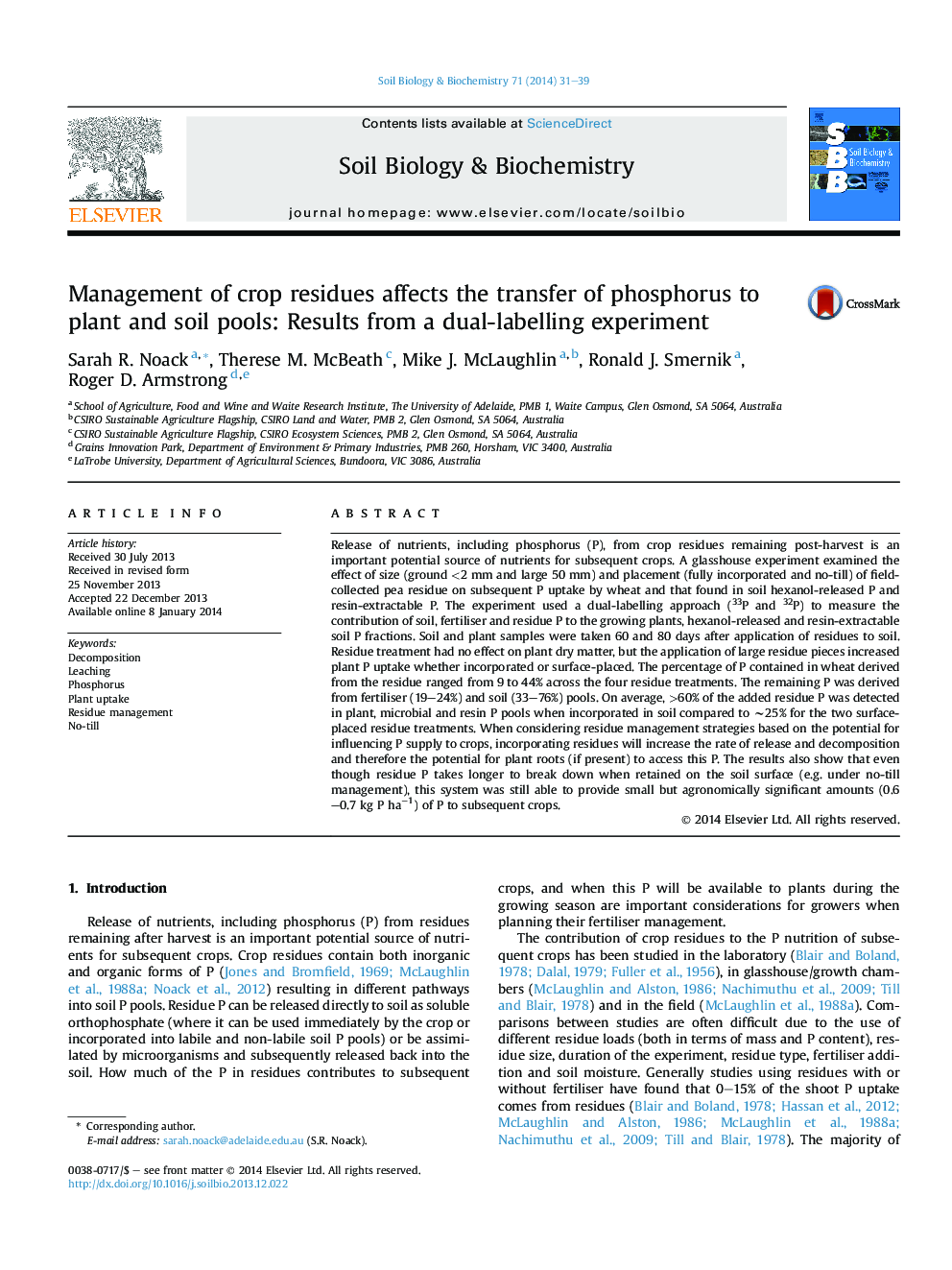| Article ID | Journal | Published Year | Pages | File Type |
|---|---|---|---|---|
| 8364846 | Soil Biology and Biochemistry | 2014 | 9 Pages |
Abstract
Release of nutrients, including phosphorus (P), from crop residues remaining post-harvest is an important potential source of nutrients for subsequent crops. A glasshouse experiment examined the effect of size (ground <2 mm and large 50 mm) and placement (fully incorporated and no-till) of field-collected pea residue on subsequent P uptake by wheat and that found in soil hexanol-released P and resin-extractable P. The experiment used a dual-labelling approach (33P and 32P) to measure the contribution of soil, fertiliser and residue P to the growing plants, hexanol-released and resin-extractable soil P fractions. Soil and plant samples were taken 60 and 80 days after application of residues to soil. Residue treatment had no effect on plant dry matter, but the application of large residue pieces increased plant P uptake whether incorporated or surface-placed. The percentage of P contained in wheat derived from the residue ranged from 9 to 44% across the four residue treatments. The remaining P was derived from fertiliser (19-24%) and soil (33-76%) pools. On average, >60% of the added residue P was detected in plant, microbial and resin P pools when incorporated in soil compared to â¼25% for the two surface-placed residue treatments. When considering residue management strategies based on the potential for influencing P supply to crops, incorporating residues will increase the rate of release and decomposition and therefore the potential for plant roots (if present) to access this P. The results also show that even though residue P takes longer to break down when retained on the soil surface (e.g. under no-till management), this system was still able to provide small but agronomically significant amounts (0.6-0.7 kg P haâ1) of P to subsequent crops.
Related Topics
Life Sciences
Agricultural and Biological Sciences
Soil Science
Authors
Sarah R. Noack, Therese M. McBeath, Mike J. McLaughlin, Ronald J. Smernik, Roger D. Armstrong,
